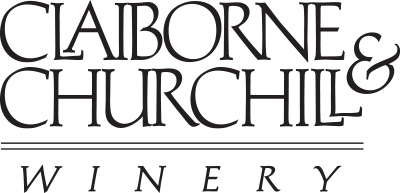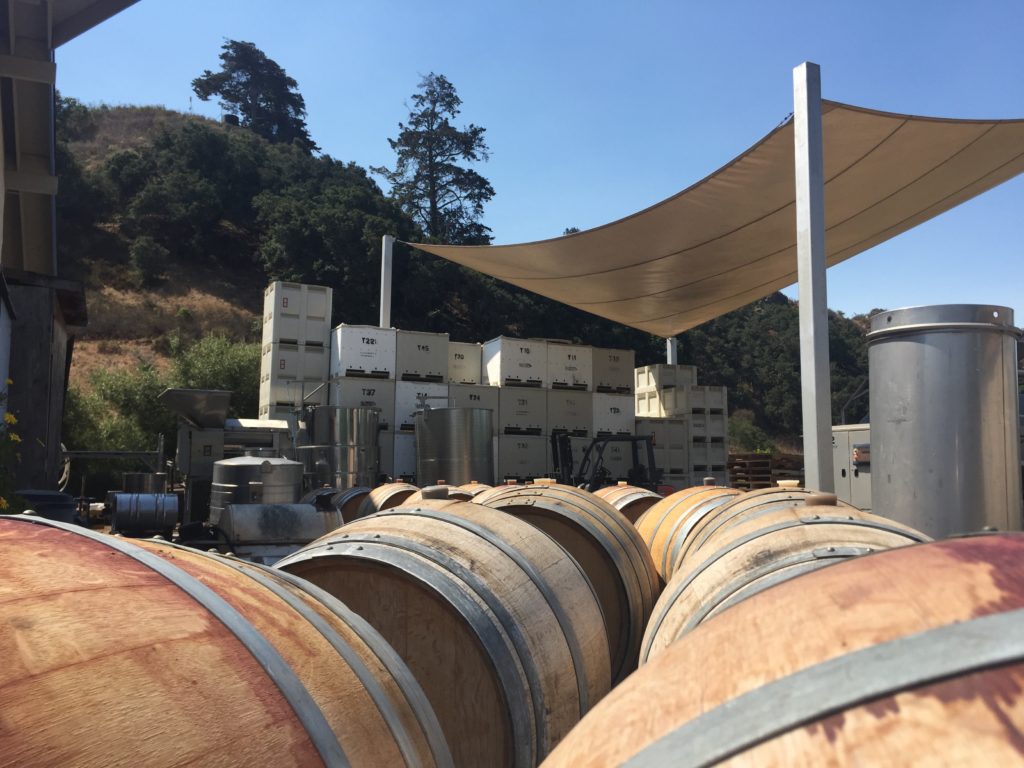With the beginning of August behind us, we are looking forward to our most exciting time of the year: harvest! The grapes are almost ready for their metamorphosis into some great wines. We have some special inside information into Harvest 2016 for Claiborne & Churchill from Winemaker Coby Parker-Garcia. Keep reading to see his explanation of how harvest works and his predications of how it will turn out this year.
Harvest 2016 predictions:
Things are looking great for the upcoming 2016 Harvest! We are expecting higher yields of fruit compared to 2015. This year’s harvest will still be an early one, however, we will begin picking fruit about two weeks later than last year. Over the past decade we have seen a consolidated in the time span of which we harvest our grapes. There are some days where we are picking Riesling and Pinot Noir on the same day. So, we are seeing the ripening track close together.
How to decide when to pick:
We are expecting to start harvesting fruit in the next week. To decide when we start, it is important to test the fruit to make sure the flavor profile and sugar levels are at the right spot for optimal wine making. Coby makes frequent visits to the vineyards to sample the fruit, even the Riesling and Gewürztraminer vineyards in Monterey county. In the last days before picking, Coby is keeping a close eye on the forecast as heats spikes will accelerate ripening. August has had great weather for the end of the growing season with the morning fog and afternoons in the eighty degree range.
Next steps:
After the grapes arrive at the Claiborne & Churchill crush pad, it’s time for the next steps for Harvest 2016! This is where some of the processes differ from one variety to the next. See how it works for reds, whites, and rosé below!
White Wines:
All of the white grapes for Claiborne & Churchill wines are whole cluster pressed; that takes just over ninety minutes to extract the juice from the skins. After this, the juice is pumped into a tank to cold settle ( at 40 to 50 degrees) where the solids fall to the bottom and the juice is racked off its solids to another vessel for fermentation. The clear juice then ferments in the vessel of choice, which at our winery is either barrels or stainless steel tanks. Fermentation in the barrels takes about three weeks compared to the stainless steel tanks which takes five to six weeks. After that, they can be transferred into a new clean vessel.
Red Wines:
For the red grapes, we de-stem the grapes and leave them as full berries. For some, we even leave the stems on! The grapes then sit in fermentation vats for two weeks and get punched down 3-4 times per day. The grapes do a three to five day cold soak and then we inoculate with three different yeasts or allow for native fermentation. All red wines go through malolactic fermention (about 3months) with the exception of our Port. After secondary fermentation SO2 is added to the barrels and topped every two to three weeks. After aging for 8-14 months the wine is filtered and bottled.
Cuvée Elizabeth Rosé of Pinot Noir:
We pick the Pinot Noir a little earlier for the Rosé and then crush and de-stem the grapes into ¾ ton fermentation bins. After 17 to 24 hours of skin contact the juice is Saignée and racked into neutral oak red wine barrels. Select yeast is added, and the juice ferments for about 3 weeks to a month. The Rosé is then racked back into clean barrels and ages for 4-5 months.
A small percentage of finished white wine is blended into the Rosé to increase aromatics and fruitiness. The finished blend goes into stainless steel tank where it sits for about one month before being fined, filtered and then bottled.
We are excited for harvest 2016 to begin and are looking forward to making our ever popular Sparkling Wine, a blend of Chardonnay and Pinot Noir, as well as a new Grenache/Syrah blend. Check out our social media accounts for updates on Harvest 2016 at Claiborne & Churchill!


